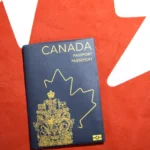
Tips to Minimize the Risk of Canada Visitor Visa Rejection
Applying for a visitor visa to Canada may seem like a routine procedure, but it’s far from guaranteed that you’ll be approved. According to recent data, Canada has seen a significant rise in visitor visa rejections in 2024. This comes amid changes to the validity periods for Canadian visitor visas. Whether you’re applying for the first time or trying again after a rejection, here are several strategies to help strengthen your application and reduce the chances of refusal.
Note: Not all foreign nationals need a visa to visit Canada. Certain individuals are visa-exempt, while others may only require an electronic Travel Authorization (eTA) instead.
1. Submit a Thorough and Complete Application
Ensuring your application is complete is crucial for success. When applying online for a visitor visa, you’ll need to fill out specific forms, such as:
- IMM 5257 (Application for Temporary Resident Visa)
- IMM 5707 or IMM 5645 (Family Information Form)
In addition to these, you may be asked to complete other forms like:
- IMM 5409 (Statutory Declaration of Common-Law Union)
- IMM 5476 (Use of Representative)
- IMM 5475 (Authority to Release Personal Information)
Make sure all forms are filled out accurately and completely. If a section does not apply to you, be sure to mark it as “Not Applicable” or “NA.”
2. Attach All Required Documents
Upon submitting your online application, a personalized checklist will be provided. Be sure to submit all the documents listed on this checklist to avoid delays or rejection. Commonly required documents include:
- A valid passport and two recent photographs that meet visa application standards
- Proof of financial support (e.g., recent bank statements)
- A detailed travel itinerary
- An invitation letter from the person you’re visiting, along with evidence of your relationship to them
- Proof of employment, or details of any other financial ties
- Your travel history
Additional documents like a medical exam, police certificate, or even an interview with an immigration official may be requested depending on your situation.
3. Demonstrate Strong Ties to Your Home Country
Immigration officers need to be confident that you plan to leave Canada after your visit. To prove this, you should document strong ties to your home country, such as:
- Employment confirmation (e.g., a letter from your employer)
- Proof of family dependents
- Lease agreements or property ownership
- Evidence of financial assets
These documents demonstrate that you have reasons to return home after your visit.
4. Show Adequate Financial Support
You must show that you have sufficient funds to cover your stay in Canada. This can be done by submitting:
- Recent bank statements
- Pay stubs or employment verification letters
- Proof of assets (such as property or investments)
If someone else is sponsoring your trip, they must provide a letter of support along with proof that they have the financial means to host you.
Note that the required amount depends on the duration of your stay and where you plan to reside in Canada.
5. Clarify the Purpose of Your Visit
It’s essential to clearly outline the purpose of your trip. Be transparent about what you plan to do while in Canada and how long you intend to stay. To support this, submit supplementary documents like:
- Invitations for events (such as weddings or conferences)
- Return flight tickets
- A detailed itinerary of activities planned during your stay
A clear and well-documented purpose will help convince immigration officers that you are visiting temporarily and with a legitimate reason.
6. Ensure You Meet Health Requirements
Canada requires that visitors be in good health to enter the country. If there’s any concern about your health condition, immigration officers might reject your application. To avoid this, consider providing:
- A detailed medical report
- Undergoing a medical examination, if necessary
A clean bill of health ensures that you won’t impose a burden on public health services or pose a threat to public safety.
7. Address Any Criminal Inadmissibility
If you’ve ever been convicted of a crime, you may face criminal inadmissibility, which could bar you from entering Canada. However, there are ways to overcome this, including:
- Applying for a Temporary Resident Permit (TRP) for short-term access
- Seeking criminal rehabilitation if eligible
- Demonstrating deemed rehabilitation in certain cases
Consulting an immigration lawyer can also help in cases of complex legal issues by providing a detailed legal opinion letter.
8. Disclose Any Complicated Travel History
If you’ve had issues with past visa applications, such as overstaying in a country or facing previous rejections, transparency is key. Explain your travel history in detail, acknowledging any mistakes and showing what corrective actions you have taken. It’s essential to share any prior visa rejections, as failing to do so could result in a five-year ban for misrepresentation.
9. Resolve Residency Issues Before Applying
If you’re currently residing in a country illegally, it’s advisable to resolve this situation before applying for a Canadian visitor visa. Immigration officers may view such issues unfavorably. In cases where your home country is politically unstable, providing additional information that shows your intent to leave Canada after your visit can be beneficial.
Changes to Visitor Visa Validity in 2024
In November 2024, the Canadian government updated its guidelines for issuing visitor visas. Immigration officers now have greater discretion in determining the duration and type of visa issued (single-entry vs. multiple-entry). They will consider several factors, including:
- The purpose of your visit
- Your financial situation
- Any need for medical treatment
- Other individual factors
This shift moves away from the previous norm of issuing long-term multiple-entry visas and allows officers more flexibility in making decisions based on the specifics of each application.
By following these guidelines, you can significantly improve your chances of obtaining a visitor visa for Canada. Proper documentation, financial proof, and transparency about your intentions and history are essential for a successful application.
For a consultation about Immigration options, reach out to the CAD IMMIGRATION today!






I want to apply for canada visit visa but 3 time rejection so can you help me